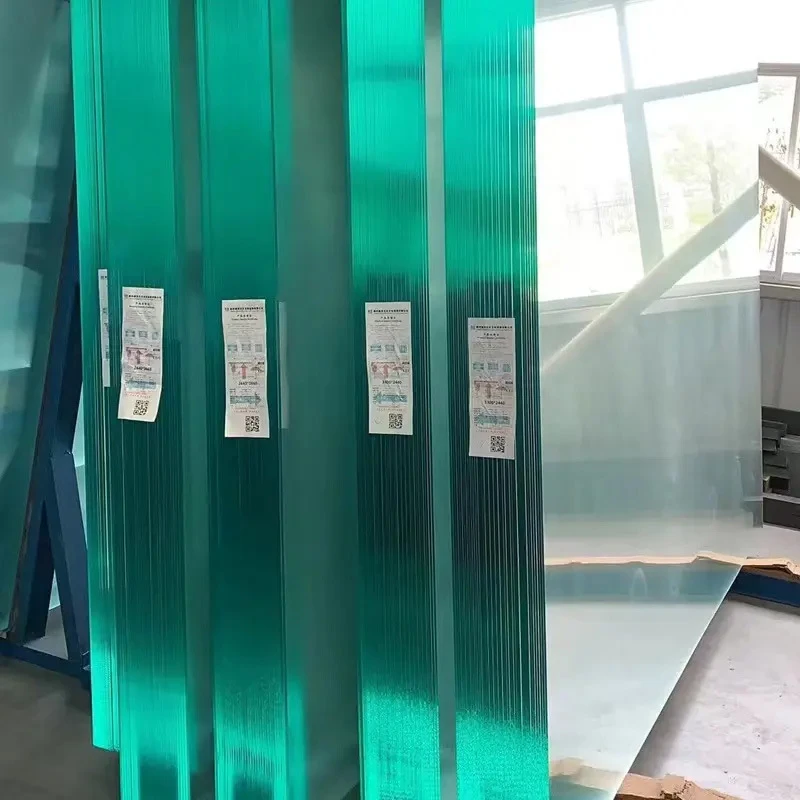The float glass process, a revolutionary method introduced in the mid-20th century, transformed the way flat glass is produced, resulting in clearer, smoother, and more visually appealing glass products. This technique not only marked an advancement in manufacturing but also redefined quality standards across industries reliant on high-grade flat glass, such as automotive, architecture, and digital displays. To understand the intricacies of the float glass process, it's important to delve into each step and illustrate how it upholds experience, expertise, authoritativeness, and trustworthiness.

Float glass production begins with a careful blend of raw materials, primarily sand, soda ash, and limestone. These components are selected for their purity, consistency, and ability to produce the optimal melt, reflecting decades of expertise in material science. The materials are heated in a furnace at approximately 1700°C to form a molten glass mixture. This process demands precision and a deep understanding of thermal dynamics, underscoring the expertise of manufacturers who have refined these parameters to achieve unparalleled clarity and homogeneity in the glass.
Once the glass is melted, it is gently poured onto a bath of molten tin. Here lies the heart of the float glass process—the molten tin, due to its high density and immiscibility with glass, acts as a smooth substrate. The glass floats on the surface, naturally spreading out and forming a uniform thickness due to the gravitational pull and surface tension. This innovative use of tin as a nurturing medium underscores the creativity and authoritative knowledge embedded in the float glass process, which replaced earlier methods that were labor-intensive and less reliable in producing high-quality glass.

Precision continues to play a crucial role as the glass ribbon undergoes controlled cooling, a step known as annealing, within the lehr. The cooling phase is essential to relieve internal stresses, ensuring the glass is not only visually flawless but structurally robust. Experience and trustworthiness are reflected in the meticulous control over temperature gradients in the lehr, preventing any potential distortions or weaknesses that could compromise the glass's physical performance in its end-use environments.
Throughout these stages, real-time diagnostics and cutting-edge technology are employed to monitor the quality of the glass. Automated inspection systems identify and rectify imperfections, reinforcing the industry's commitment to producing unblemished glass. This level of quality control emphasizes the authoritative stance of float glass producers, continuously assuring clients that their products meet stringent international standards.
float glass process
Moreover, the float glass process is a beacon of sustainability within the glass-making industry. The method's efficiency reduces waste and energy consumption compared to older techniques, spotlighting the industry's ongoing dedication to environmental stewardship. As sustainability becomes increasingly critical, consumers can trust that the glass procured via the float process aligns with ecological values and meets the needs of environmentally conscious markets.
In contemporary applications, float glass serves as the foundation for numerous advanced products, including tempered and laminated glass, each benefiting from the initial high-quality characteristics imparted by the float process. The adaptability and continuous improvement in float glass manufacturing ensure its relevancy and authoritative position in meeting evolving industry requirements.
Those involved in the float glass industry, from engineers to quality assurance specialists, bring a wealth of experience, equipped with knowledge that has been handed down, improved upon, and meticulously documented. This depth of expertise not only cements the reliability of the products but also positions them as pioneers of modern glass manufacturing.
In a marketplace that values transparency, precision, and quality, the float glass process stands as a testament to innovation and excellence, embodying the key pillars of experience, expertise, authoritativeness, and trustworthiness. As a critical component that shapes modern living spaces, transportation, and technology, float glass continues to shine with the promise of durability, aesthetic appeal, and ecological responsibility.
 Afrikaans
Afrikaans  Albanian
Albanian  Amharic
Amharic  Arabic
Arabic  Armenian
Armenian  Azerbaijani
Azerbaijani  Basque
Basque  Belarusian
Belarusian  Bengali
Bengali  Bosnian
Bosnian  Bulgarian
Bulgarian  Catalan
Catalan  Cebuano
Cebuano  Corsican
Corsican  Croatian
Croatian  Czech
Czech  Danish
Danish  Dutch
Dutch  English
English  Esperanto
Esperanto  Estonian
Estonian  Finnish
Finnish  French
French  Frisian
Frisian  Galician
Galician  Georgian
Georgian  German
German  Greek
Greek  Gujarati
Gujarati  Haitian Creole
Haitian Creole  hausa
hausa  hawaiian
hawaiian  Hebrew
Hebrew  Hindi
Hindi  Miao
Miao  Hungarian
Hungarian  Icelandic
Icelandic  igbo
igbo  Indonesian
Indonesian  irish
irish  Italian
Italian  Japanese
Japanese  Javanese
Javanese  Kannada
Kannada  kazakh
kazakh  Khmer
Khmer  Rwandese
Rwandese  Korean
Korean  Kurdish
Kurdish  Kyrgyz
Kyrgyz  Lao
Lao  Latin
Latin  Latvian
Latvian  Lithuanian
Lithuanian  Luxembourgish
Luxembourgish  Macedonian
Macedonian  Malgashi
Malgashi  Malay
Malay  Malayalam
Malayalam  Maltese
Maltese  Maori
Maori  Marathi
Marathi  Mongolian
Mongolian  Myanmar
Myanmar  Nepali
Nepali  Norwegian
Norwegian  Norwegian
Norwegian  Occitan
Occitan  Pashto
Pashto  Persian
Persian  Polish
Polish  Portuguese
Portuguese  Punjabi
Punjabi  Romanian
Romanian  Russian
Russian  Samoan
Samoan  Scottish Gaelic
Scottish Gaelic  Serbian
Serbian  Sesotho
Sesotho  Shona
Shona  Sindhi
Sindhi  Sinhala
Sinhala  Slovak
Slovak  Slovenian
Slovenian  Somali
Somali  Spanish
Spanish  Sundanese
Sundanese  Swahili
Swahili  Swedish
Swedish  Tagalog
Tagalog  Tajik
Tajik  Tamil
Tamil  Tatar
Tatar  Telugu
Telugu  Thai
Thai  Turkish
Turkish  Turkmen
Turkmen  Ukrainian
Ukrainian  Urdu
Urdu  Uighur
Uighur  Uzbek
Uzbek  Vietnamese
Vietnamese  Welsh
Welsh  Bantu
Bantu  Yiddish
Yiddish  Yoruba
Yoruba  Zulu
Zulu 


